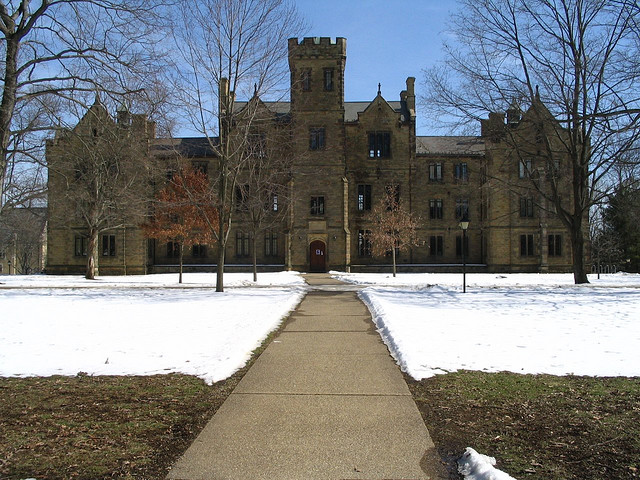About the Project
One consequence of the so-called contemporary civil rights movement of the 1960s was the recognition of both intentional and consequential exclusion of students from racial and ethnic minority communities from enrollment in institutions of higher learning across the country as well as implementation of strategies to admit and retain such students at public and private colleges and universities alike. Many of the nation’s select institutions went far beyond the new court ordered mandates to eliminate discriminatory practices, adopting new admissions policies and embarking upon strategies designed to increase minority enrollments.
By the late nineteen sixties, colleges and universities throughout the United States had admitted their first Black students. Consistent with the political climate of the times, these students demanded increased support from college administrations in the form of curricular additions that offered opportunities to study subjects of particular importance to racial minority populations in the U.S., the hiring of faculty and staff of color, and the implementation of student affairs programs that were culturally relevant to the experiences of students who were significantly under-represented within the student body. Chief among these new programs were group-affinity organizations that began to sprout up on campuses across the nation. At Kenyon College in Ohio, the first such organization was the Black Student Union (BSU) which was founded in 1969. Beginning with the twentieth anniversary of the founding of Kenyon’s BSU, periodic efforts have been made to document the organization’s history including, most recently, a modest oral history project undertaken in the summer and fall of 2014.
As Kenyon College, a predominantly White liberal arts institution, has worked to become more racially and ethnically diverse, the populations of students of color have increased over the past 25 years. As the changing demographics of the nation might suggest, the representation of Latino/as students “on the Hill” and within the College’s student body has grown significantly as well. Emulating the strategies pursued by their African American contemporaries nearly two decades earlier, Latinos and Latinas at Kenyon College moved to create an affinity group and have it officially recognized by the college. In 1986, the College announced the founding of ADELANTE, the officially recognized Latino/a student association. Since that time, other students of color, international students, and students of non-Western heritage at Kenyon have formed additional identity-based organizations such as the African Students Association, South Asian Society, Middle East Students Association, Asian Society of Kenyon, Men of Color, Sisterhood, and Indigenous Nations at Kenyon among others.
Like many student organizations over the years, some of the racial, ethnic or cultural “affinity group” associations have been short-lived. As time goes by, the reasons and motivations for the founding of such groups become less clear; sometimes, few recall the origins of the groups or the issues around which much of the dialogue at meetings and events revolved. Increasingly, the need for constructing social histories of these organizations is being recognized. Fortunately, many of these groups were founded recently enough that the officers, members, and advisors could be located and contacted. As a consequence, oral histories have begun to be compiled. In the summer of 2014, a Kenyon Summer Scholar embarked upon such a project in constructing a social history of the Black Student Union in anticipation of the 45th anniversary of that organization’s founding. During that project, several of the group’s members were interviewed. That recent undertaking serves as both the impetus and model for this proposal to conduct an oral history of Kenyon’s Latino/a student experiences.
Many of the best oral history projects begin as a partnership between the compilers and members of the local community in which the project is to take place. The partnerships are formed out of mutual interest and depend upon true reciprocity. As much as the persons conducting the interviews must be committed to the project, members of the community about which the project is focused must see the value and benefit of their participation.
This project is conducted in collaboration with the officers of Adelante. The student-principal interviewer, both a member and officer of the organization, is involved in the celebration being planned to commemorate the founding of the college’s first recognized association of Latino/a students. While members have expressed regret that little has been compiled to date to document the experiences of Latino/a students, staff and administrators at Kenyon College, many see this project as an important opportunity to discover the stories of those who were among the first to matriculate and teach at the college. Having the cooperation of the association will facilitate gaining access to alumni lists and documents generated by the organization. It should also enhance the likelihood that current members and former members will consent to being interviewed.
One other component of partnership building involves seeking institutional support for the project. The student-principal will enlist the assistance of the College archives staff to search for records of relevant persons and events. Kenyon’s Office of Diversity, Equity, and Inclusion will be consulted. The Office of Alumni Affairs will be asked to assist in compiling lists of Latino/a graduates as well as publicizing the project to provide opportunities for all persons interested in the history of Latino/as at Kenyon to contribute narratives about their time and experiences on Kenyon’s campus.










